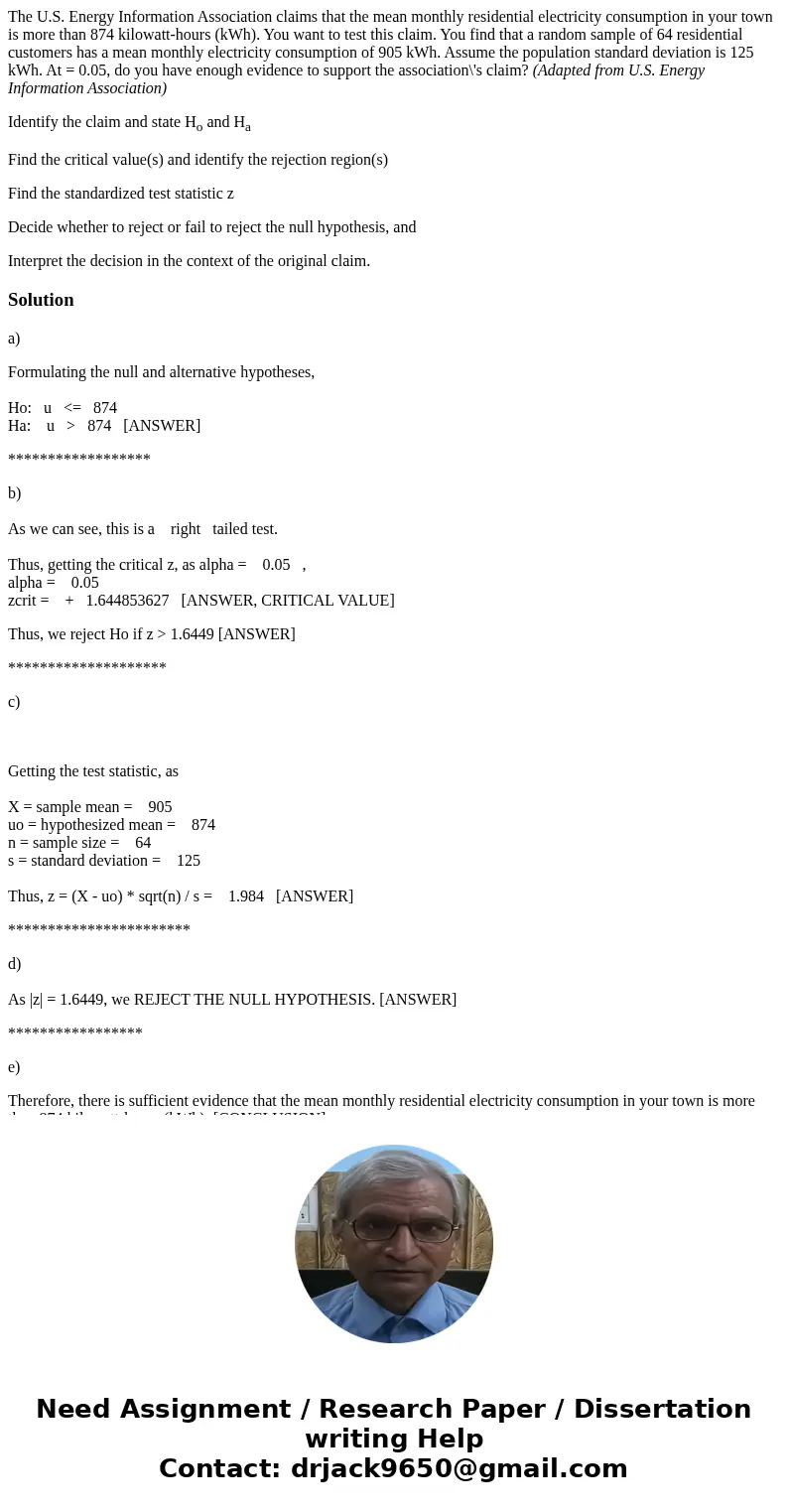The US Energy Information Association claims that the mean m
The U.S. Energy Information Association claims that the mean monthly residential electricity consumption in your town is more than 874 kilowatt-hours (kWh). You want to test this claim. You find that a random sample of 64 residential customers has a mean monthly electricity consumption of 905 kWh. Assume the population standard deviation is 125 kWh. At = 0.05, do you have enough evidence to support the association\'s claim? (Adapted from U.S. Energy Information Association)
Identify the claim and state Ho and Ha
Find the critical value(s) and identify the rejection region(s)
Find the standardized test statistic z
Decide whether to reject or fail to reject the null hypothesis, and
Interpret the decision in the context of the original claim.
Solution
a)
Formulating the null and alternative hypotheses,
Ho: u <= 874
Ha: u > 874 [ANSWER]
******************
b)
As we can see, this is a right tailed test.
Thus, getting the critical z, as alpha = 0.05 ,
alpha = 0.05
zcrit = + 1.644853627 [ANSWER, CRITICAL VALUE]
Thus, we reject Ho if z > 1.6449 [ANSWER]
********************
c)
Getting the test statistic, as
X = sample mean = 905
uo = hypothesized mean = 874
n = sample size = 64
s = standard deviation = 125
Thus, z = (X - uo) * sqrt(n) / s = 1.984 [ANSWER]
***********************
d)
As |z| = 1.6449, we REJECT THE NULL HYPOTHESIS. [ANSWER]
*****************
e)
Therefore, there is sufficient evidence that the mean monthly residential electricity consumption in your town is more than 874 kilowatt-hours (kWh). [CONCLUSION]

 Homework Sourse
Homework Sourse